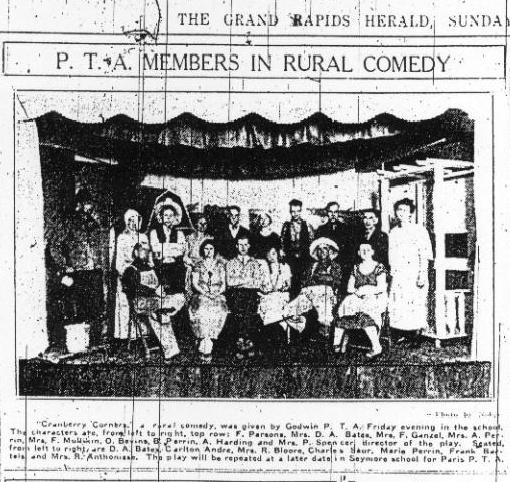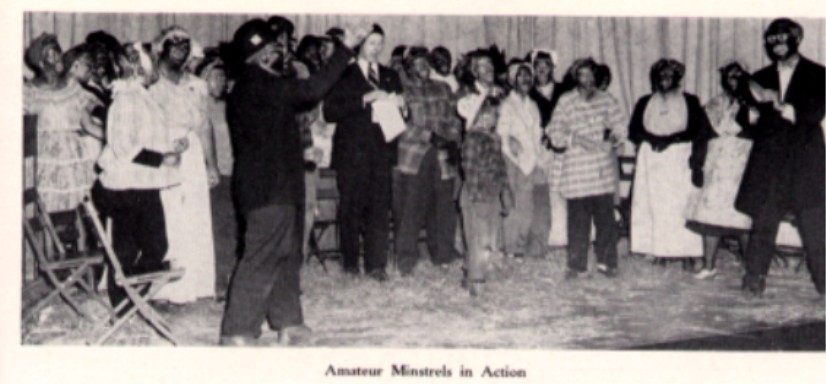

In the 1950s there was a plan for an East Godwin elementary school, to provide for the needs of the area east of Eastern Avenue, which was growing rapidly. The necessary millage was voted down. At the same time, a millage for the Godwin physical education building, begun in 1957, was passed, and the voters apparently felt that enough was enough. So East Godwin was never built, and a lot of grade school children spent a lot of time commuting.

In the late 1940s, and throughout the 1950s and early 1960s, there seemed to be a fascination in some European countries about the American educational system. Exchange students, teachers, and educational bureaucrats visited the US, often for periods of a year, with the apparent goals of simply trying to find out what made the American educational system function, and perhaps a broader goal of finding out what America was about. WWII was still not so far in the past, and America emerged as the dominant economic power after the war. Perhaps some in Europe were simply curious to find out what made that happen.
At the start of WWII, America had not fully recovered from the Great Depression. Almost overnight, there was essentially full employment. The US became a manufacturing juggernaut, and following a period of perhaps five years after the war, as the US economy converted back to civilian production, the US economy was the strongest in the world, and there were several decades of strong prosperity. This too was of interest to much of the world. Economies ravaged by war wanted to know how the US had been able to rise to the challenge of massive war production, and then go on to maintain a strong civilian economy.
Naturally education was thought to be part of this. But in fact there was probably nothing very exceptional about the US educational system, save a strong practical bent, and adequately disciplined students that shared the strong work ethic of their parents. Until WWII, the US had never been particularly strong in science.
The event that probably had more to do with the emergencies of a strong US educational system, especial in the sciences, occurred on October 4, 1957, with the USSR's launch of Sputnik. Having considered the USSR a backward country, it came as a shock to many in the US that it had the technology necessary to launch a satellite.
With close to 50 years of hindsight, it is now known that the satellite was largely a publicity stunt. Serge Korolev, the "Russian von Braun," sensed that the world would be very impressed by technological feats of strength, whether they had any practical purpose or not. Sputnik served no particular purpose, except to show that the USSR could launch a satellite. And of course it was the world's first satellite. While Warner von Braun and his team could well have launched a satellite as early as 1955, intra service rivalry and other politics served to prevent them from doing so. In reality, the US had the technology, but not the political will to launch a satellite. Even after the USSR launched Sputnik, many in the government could not understand what the fuss was about.
But of course the public at large in the US did not know the details, and Sputnik created something of a panic. In this, Korolev and the USSR became the victims of unintended consequences. Vast amounts of money were spent in the US on education, and within 5 years a large number of very qualified scientists and engineers were at work in the newly created NASA. The US would go on to put men on the moon several times.
The meteoric rise of space prowess fizzled almost as quickly. By 1972 von Braun quit space work in disgust. Bureaucrats had taken over NASA, and have remained in control to the present day. NASA funding went down just as fast as the Vietnam war ramped up and absorbed all of the money that previously went in to the space program.
But the US educational system that grew out of the space era continued to thrive for a couple of decades. No doubt that too made many in Europe and other places curious, and in one capacity or another they came over to the US to try to find out. What they thought they found out is unclear. To the extent that education is part of a country's culture as much as a formal approach to an end, it was no doubt a daunting and confusing task. At the time, most Americans probably viewed education as a means to an end rather than a goal in its own right. Previous generations took a pragmatic approach to just about everything, and the approach worked well. It was called something like ingenuity. People like the Wright brothers somehow knew what they had to do, and through a disciplined and persistent program, got the job done. Thomas Edison took the empirical approach a formal step forward and invented the industrial lab.
Just how these people and others did what they did is probably still a matter of debate. It's plausible that their accomplishments were part of the broader American culture, and therefore hard to pinpoint.
Anyway, in hopes of finding out, or participating, a number of exchange teachers, students, and bureaucrats did come to Godwin from Europe and Central America.


( Material provided by Lewis Lull, class of 1940, and scanned by Craig Lull, class of 1970. )
1924 PTA play. Anyone know whether the PTA plays were an annual event, and about when they stopped?


( Material provided by Lee Neugent, class of 1948. )
Minstrel shows had a long history in the early days of Godwin. See a photo of the 1928 minstrel show.

